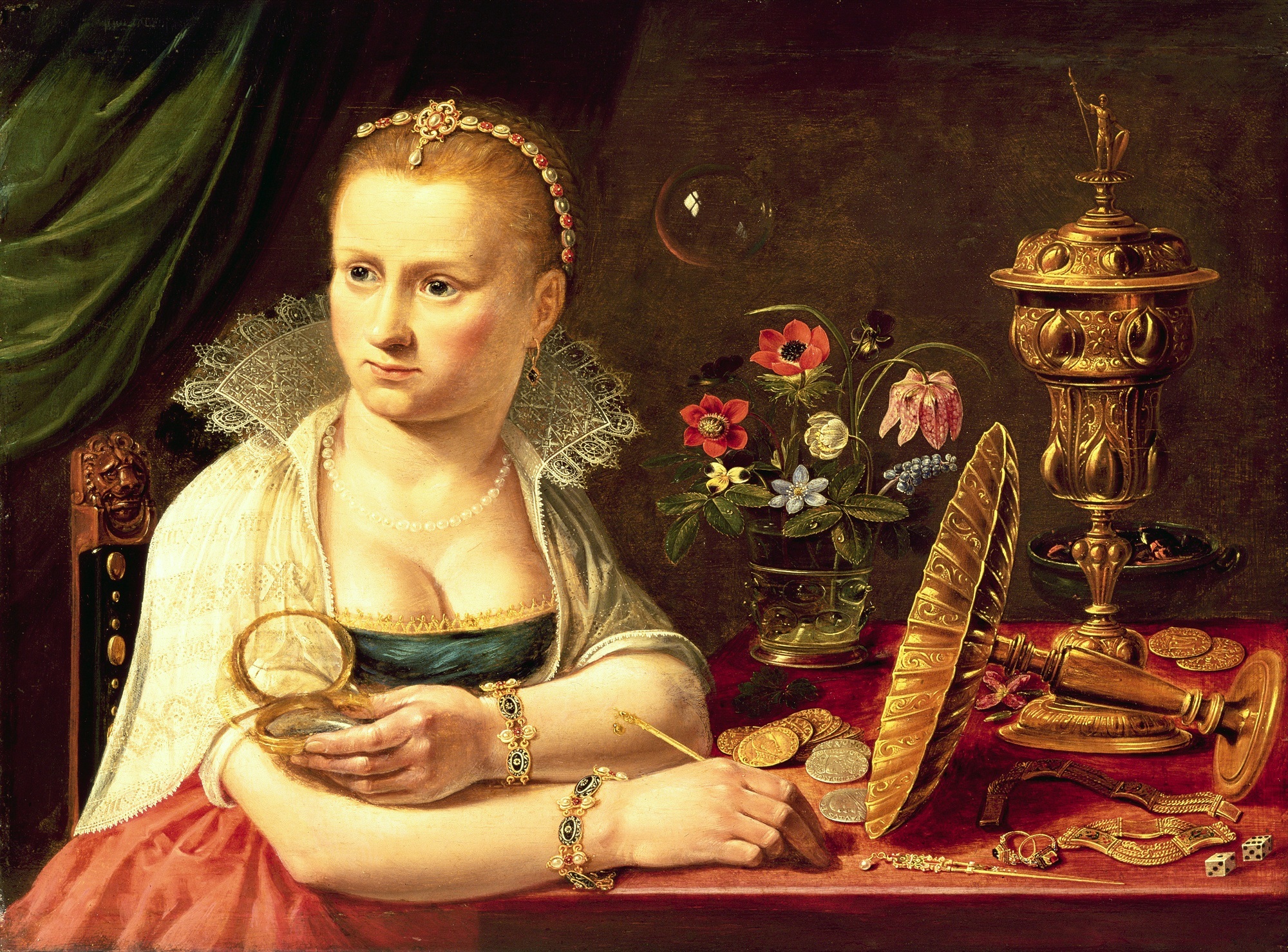We continue our partnership with Mauritshuis in the Hague, thanks to whom we can publish the masterpieces from their collection over the next two Sundays. Enjoy! :)
Clara Peeters (c. 1580/90– in or after 1621) was one of the few female artists of the 17th century. She was also a pioneer in the field of still-life painting, which had only just emerged as an independent genre at the beginning of the 17th century. This cheese still life is one of her best works. The pewter plate containing the cheeses and a plate of butter curls instantly catch the eye. The green cheese at the front is a ripe Edam cheese, the large half-cheese behind it is presumably Gouda cheese, and on top of that lies a piece of sheep’s cheese. The abundance of dairy products possibly alludes to the harmful effects of excess eating, as underscored by a well-known 17th-century Dutch saying: zuivel op zuivel is het werk van de duivel (dairy products galore, Satan’s work evermore). In the foreground—between two pretzels and a Wan-Li dish containing dried figs, almonds, and raisins—lies a knife with a decorated silver handle on which Clara Peeters placed her signature.
The objects and food are depicted with great precision, as seen in the lidded Venetian glass with gilded detailing and the crumbly cheese, shreds of which have fallen on the edge of the plate. The artist even reproduced the hole made by the cheese inspector to test the cheese. Reflected in the pewter lid of the earthenware jug is the face of a woman wearing a white cap: a self-portrait of the artist. Her work exerted a decisive influence on the food still lifes painted decades later by the Haarlem artists Pieter Claesz and Willem Heda. Similarities include the close-up rendering of the objects and the limited number of colors.
Dear users: we have a dream to translate DailyArt to new languages: Chinese, Portuguese, Spanish, French, Turkish and Italian. To make that happen we need to update the app and build some new software infrastructure. We need $10,000 - if you would like to help us you can donate here :) Thank you <3


 Clara Peeters
Clara Peeters